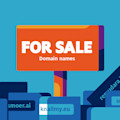At the end of 2016, internet retail giant Coolblue (NL) announced that it was bringing together hundreds of individual webshops under a single banner: 'coolblue.nl'. The long-planned migration got underway last week (NL). It marked a radical change of direction and involved Coolblue shedding numerous domain names associated with its success to date. Developments are being watched closely, particularly in the domain name industry. What does the Coolblue case say about the best policy on domain names? Are others likely to follow the Coolblue example?
Product-specific domain names often good for startups
Many webshops start out as specialist suppliers, with domain names that match the product that they sell. Belsimpel began with laptoponline.nl (NL), for example. For many startups, it's a sound strategy, because it minimises the cost of pushing a new brand name. After all, not everyone is in a position to make the kind of investment it took to get the name 'Zalando' known to the Dutch public – a strategy made necessary by the absence of an obvious connection between the webshop's name and its products. A clear link also boosts the click ratio, because people choose the links that look most likely to lead to what they're after.
For big webshops, brand value matters more than easy association
Although the multiple domain name strategy works well for startups, drawbacks tend to surface as a business grows. Generic names enjoy relatively little legal protection, and running dozens of specialist webshops is more cost-intensive than having a single, more general storefront. What's more, each time a new product group is added, a new 'brand' has to be launched, with its own domain name. Expanding enterprises are therefore apt to reach a point where one centralised web presence becomes preferable. The old domain names are then set to redirect to the main shop, so that traffic isn't lost. Watch SIDN Analyses fonQ to see how department store fonQ manages barbecueswinkel.nl (NL). In such cases, what we're seeing is the brand value of the shop outgrowing that of its products.
Building a stronger brand
Having a single brand makes things easier if you want to diversify. People who shop with you for one product group can easily be told about the other product groups you offer. It's much harder to get a customer of kookboekstore.nl (cookery books) to look at a promotion by zakmesshop.nl (pocket knives), although both belong to the Coolblue stable.
Brand protection
Another advantage of the path Coolblue has opted for is that on-line brand protection is more straightforward. Many big retailers get problems with typosquatting, where scammers take advantage of the fact that people often make slips when typing the retailer's name. A scammer will register a name matching a common slip in order to snare traffic and potentially mislead visitors. That kind of thing is easier to fight when you only have one brand to worry about. Especially if your brand isn't based on a generic term. Protecting names such as Bol.com and Simpel.nl is tough, because those are everyday Dutch words, which other people are entitled to use. Having a unique name like Coolblue does away with that problem: it's easy to watch out for lookalike registrations and take action when you spot one. One way to do that is with SIDN BrandGuard.
Domain names remain valuable
So what will happen to all the product-specific domain names already registered for the Dutch market? Will they be devalued by Coolblue and other retailers adopting a one-domain strategy? Far from it. The individual domain names will continue to generate traffic. Redirecting that traffic to a central site is likely to cost no more than €10 a year for each domain name, and will yield leads worth many times as much. What's more, such domain names are usually marketable. In due course, Coolblue may want to cash in by selling its sidelined names to another internet retailer, or use them to bring in outside capital under a pledging arrangement. Their established reputation is such that more than a million could certainly be raised.
Good to see the success of .nl
At SIDN, we're pleased to see that Coolblue has reached the point where the new approach makes sense. For us, it's evidence of how far you can go with a strong domain name strategy. And we look forward to the next chapter in the Coolblue story. Might that involve a Coolblue brand TLD, for example? You wouldn't want to rule it out!



